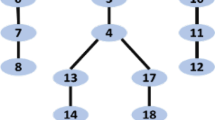Abstract
Human action can be recognized through a unimodal way. However, the information obtained from a single mode is limited due to the fact that a single mode contains only one type of physical attribute. Therefore, it is motivational to improve the accuracy of actions through fusion of two different complementary modality, which are the surface electromyography (sEMG) and the skeletal data. In this paper, we propose a general framework of fusion of sEMG signals and skeletal data. Firstly, vector of locally aggregated descriptor (VLAD) was extracted from sEMG sequences and skeletal sequences, respectively. Secondly, features obtained from sEMG and skeletal data are mapped through different weighted kernels using multiple kernel learning. Finally, the classification results are obtained through the model of multiple kernel learning. A dataset of 18 types of human actions is collected via KinectV2 and Thalmic Myo armband to verify our ideas. The experimental results show that the accuracy of human action recognition are improved by combining skeletal data with sEMG signals.






Similar content being viewed by others
References
Bentley JL (1975) Multidimensional binary search trees used for associative searching. Commun ACM 18(9):509–517
Chen C, Jafari R, Kehtarnavaz N (2015) Improving human action recognition using fusion of depth camera and inertial sensors. IEEE Trans Hum Mach Syst 45(1):51–61
Chen C, Jafari R, Kehtarnavaz N (2016) Fusion of depth, skeleton, and inertial data for human action recognition. In: 2016 IEEE international conference on acoustics, speech and signal processing (ICASSP), p 2712–2716
Chen C, Jafari R, Kehtarnavaz N (2017) A survey of depth and inertial sensor fusion for human action recognition. Multimedia Tools Appl 76(3):4405–4425
Davis JW, Bobick AF (2001) The recognition of human movement using temporal templates. IEEE Trans Pattern Anal Mach Intell 23(3):257–267
Gao J, He T, Zhou X, Ge S (2019) Focusing and diffusion: bidirectional attentive graph convolutional networks for skeleton-based action recognition. arXiv preprint arXiv:1912.11521
Guo Y, Lei L, Liu W, Cheng J, Tao D (2017) Multiview Cauchy estimator feature embedding for depth and inertial sensor-based human action recognition. IEEE Trans Syst Man Cybern Syst 47(4):617–627
Gönen M, Alpaydın E (2011) Multiple kernel learning algorithms. J Mach Learn Res 12:2211–2268
Jegou H, Douze M, Schmid C, Perez P (2010) Aggregating local descriptors into a compact image representation. Proc Cvpr 238(6):3304–3311
Liu K, Chen C, Jafari R, Kehtarnavaz N (2014) Fusion of inertial and depth sensor data for robust hand gesture recognition. IEEE Sens J 14(6):1898–1903
Liu J, Shahroudy A, Xu D, Kot AC, Wang G (2018) Skeleton-based action recognition using spatio-temporal LSTM network with trust gates. IEEE Trans Pattern Anal Mach Intell 40(12):3007–3021. https://doi.org/10.1109/TPAMI.2017.2771306
Luvizon DC, Tabia H, Picard D (2017) Learning features combination for human action recognition from skeleton sequences. Pattern Recognit Lett 99:13–20
Löpez-Nava IH,Muñoz-Meléndez A(2016) Complex human action recognition on daily living environments using wearable inertial sensors. In: ACM
Mahbub U, Imtiaz H, Rahman Ahad MA (2011) An optical flow based approach for action recognition. In: 14th international conference on computer and information technology (ICCIT 2011), p 646–651
Sonnenburg S, Rätsch G, Schäfer C, Schölkopf B (2006) Large scale multiple kernel learning. J Mach Learn Res 7(2006):1531–1565
Sonnenburg S,Strathmann H et al (2017) shogun-toolbox/shogun: Shogun 6.1.0. https://doi.org/10.5281/zenodo.1067840
Sun Y, Li C et al (2018) Gesture recognition based on kinect and SEMG signal fusion. Mobile Netw Appl 23(4):797–805
Vrigkas M, Nikou C, Kakadiaris IA (2015) A review of human activity recognition methods. Front Robot AI 2:28
Wei H, Jafari R, Kehtarnavaz N (2019) Fusion of video and inertial sensing for deep learning-based human action recognition. Sensors 19(17):3680
Xia L,Chen CC, Aggarwal J (2012) View invariant human action recognition using histograms of 3D joints. In: 2012 IEEE computer society conference on computer vision and pattern recognition workshops, 16–21 June 2012, pp 20–27
Yi L, Cheng J, Ji X, Wei F, Tao D (2017) Real-time action recognition by feature-level fusion of depth and inertial sensor. In: 2017 IEEE international conference on real-time computing and robotics (RCAR), pp 109–114
Zhang X (2010) Body gesture recognition and interaction based on surface electromyogram. PhD thesis, University of Science and Technology of China
Zhang P, Lan C, Xing J, Zeng W, Xue J, Zheng N (2019) View adaptive neural networks for high performance skeleton-based human action recognition. IEEE Trans Pattern Anal Mach Intell 41(8):1963–1978. https://doi.org/10.1109/TPAMI.2019.2896631
Zhang Z, He C, Yang K (2020) A novel surface electromyographic signal-based hand gesture prediction using a recurrent neural network. Sensors (Basel, Switzerland) 20(14):3994
Acknowledgements
This work was supported by the National Natural Science Foundation of China (62073279, 61733011), Central government guided local science and Technology Development Fund Project (216Z2001G), and the Hebei innovation capability improvement plan project (22567619H).
Author information
Authors and Affiliations
Corresponding author
Additional information
Publisher's Note
Springer Nature remains neutral with regard to jurisdictional claims in published maps and institutional affiliations.
Rights and permissions
About this article
Cite this article
Wang, X., Ding, W., Bian, S. et al. Action recognition through fusion of sEMG and skeletal data in feature level. J Ambient Intell Human Comput 13, 4125–4134 (2022). https://doi.org/10.1007/s12652-022-03867-0
Received:
Accepted:
Published:
Issue Date:
DOI: https://doi.org/10.1007/s12652-022-03867-0




